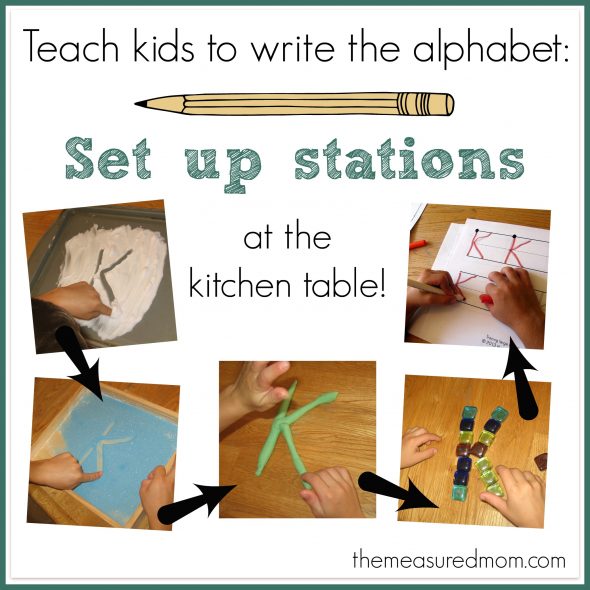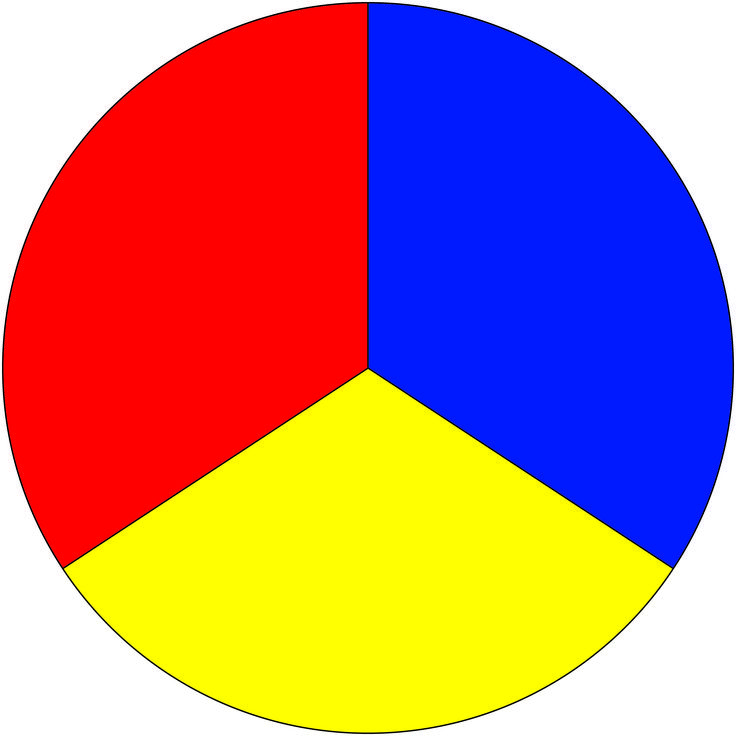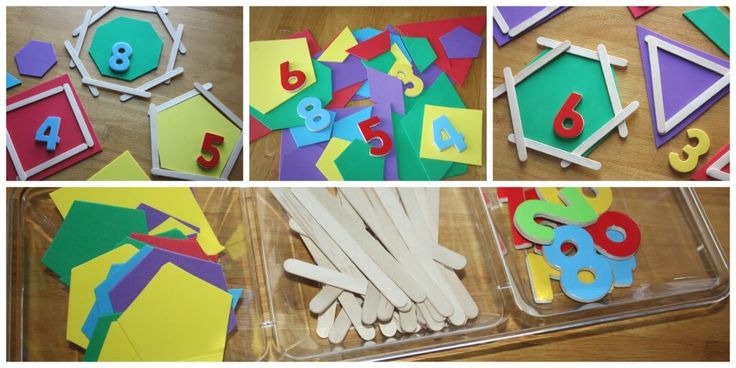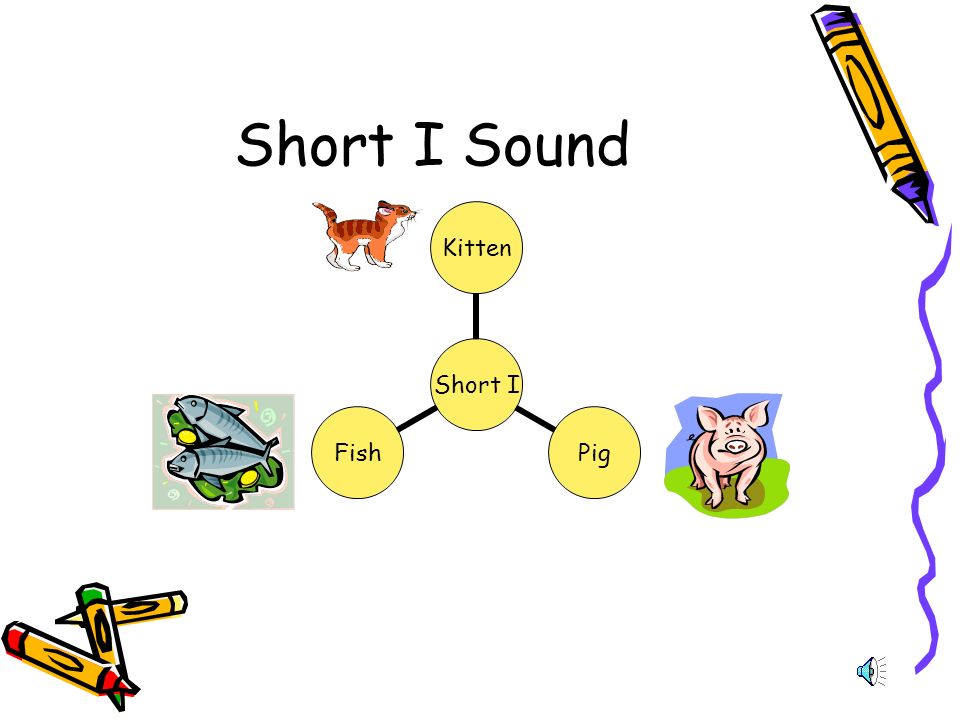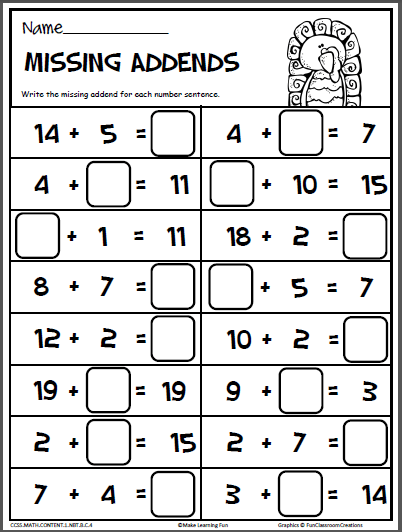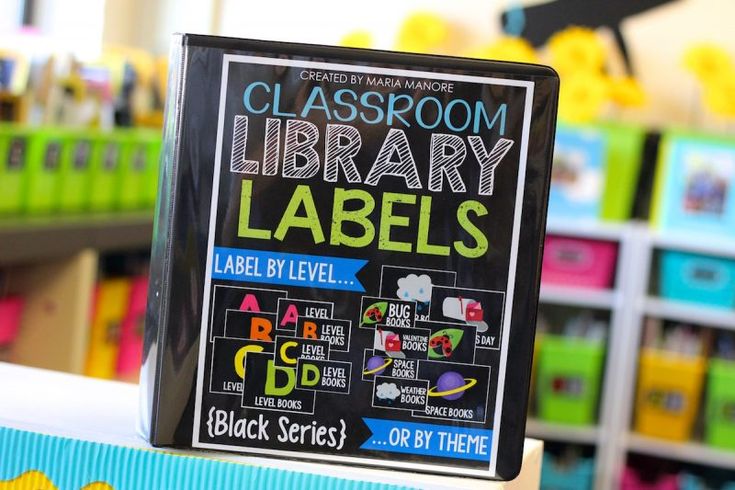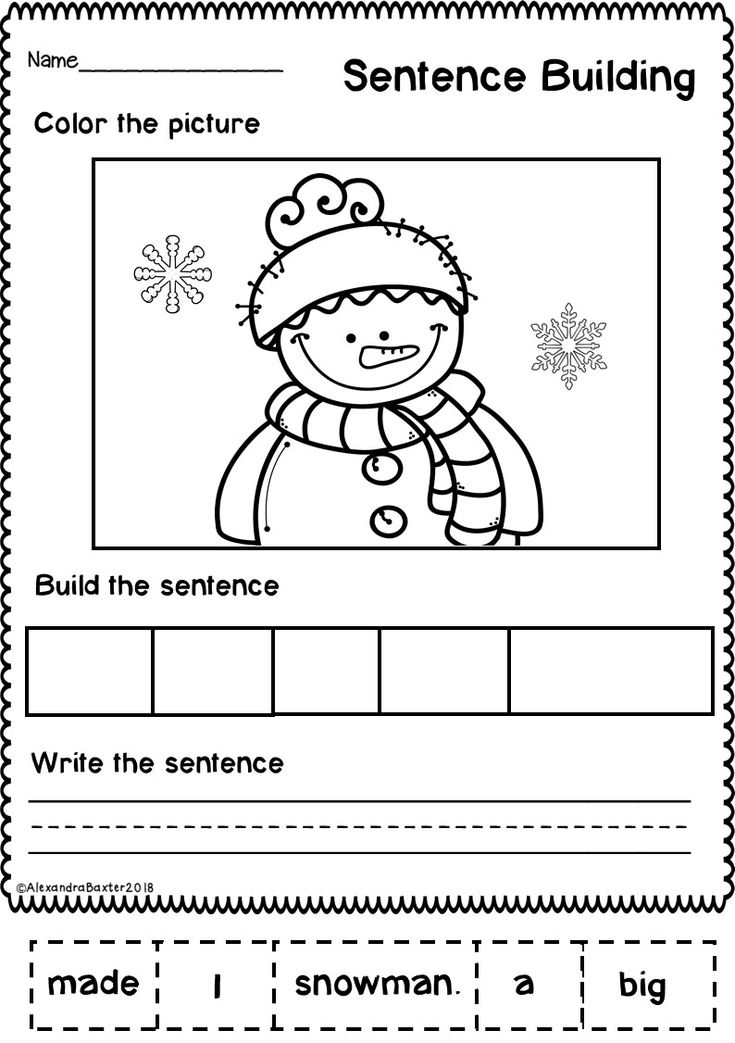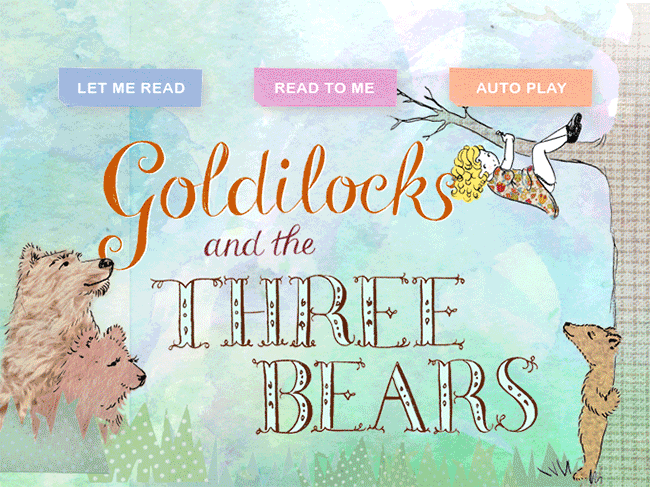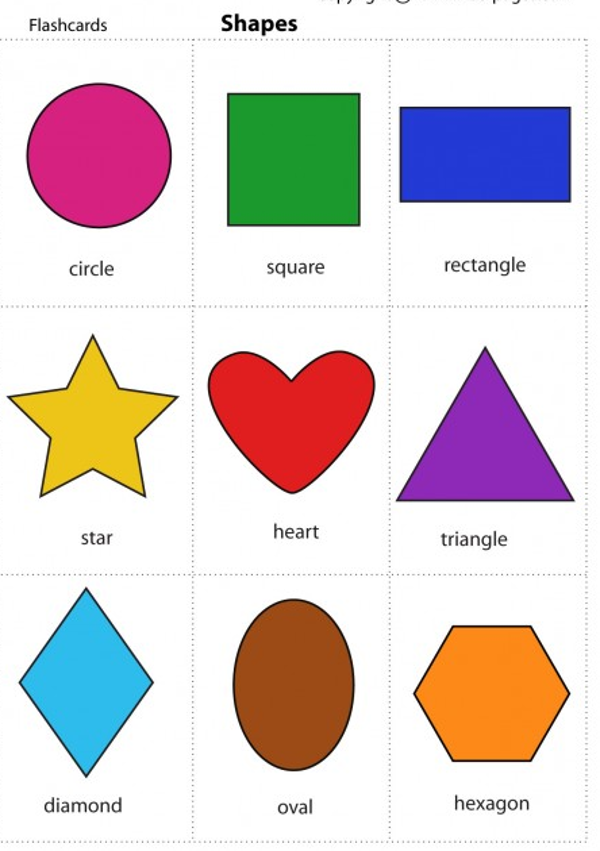Creative ways to teach alphabet
26 Easy, Fun Alphabet Activities That Give Kids the Practice They Need
Alphabet activities make learning your ABCs more fun. There are so many ways to practice your ABCs, you might be able to do one alphabet activity a day for a year without repeating. We’ve gathered over 25 super fun alphabet activities so kids can play and learn every day.
1. Write letters on dried beans
Large dried white beans are inexpensive to purchase and easy to write on. Grab a sharpie and write all the upper and lower case letters on them. Then put each set in a pile (or baggie) and ask your kids to match them.
ADVERTISEMENT
2. Letter sort with sticky notes
Write individual letters on sticky notes and then place them all over your house or just on every stair in a staircase. This practice game has a lot of variations—all tied to sorting. Ask kids to sort by:
- lowercase
- uppercase
- letters in their name
- straight lines (H)
- curved lines (c)
- both curved and straight lines (B)
- consonants
- vowels
For even more practice: have them sort their finds into ABC order, match lowercase letters to uppercase letters, and then, find a way to sort them that’s new.
3. Write letters in shaving cream
Squirt shaving cream on a table and let your kids write letters in the cream. Smoothe it out to erase and start again. Bonus: their hands and your table will be cleaner than ever!
Source: Rose and Rex
4. Bend letters with pipe cleaners
Pipe cleaners have always been a trusted source of good fine motor practice as well as a fun craft resource. Now use them to have kids create uppercase and lower case letters.
Learn more: make and takes
5. Make sensory ABC bags
This one is great because you can change up what you put in here and even move to sight words. You’ll need a gallon bag with a ziplock top. Add letters written on pieces of paper, magnetic letters, scrabble tiles, or anything else you can think of with letters. Then fill the bag with rice or oatmeal and seal it. Kids dig through the rice through the bag to find the letters. When they find them, they write down the letter they find until they locate all 26 letters of the alphabet.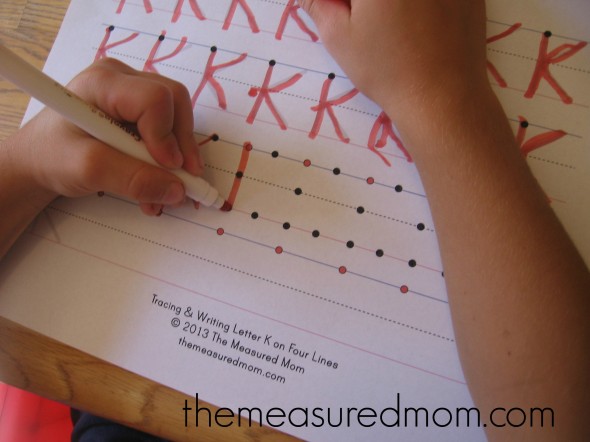
For more sensory ideas: Little Bins Little Hands
6. Find invisible letters with watercolors
This is a classic. Using a white crayon, draw letters on a piece of white paper. Give your kids watercolor, let them paint the paper, and watch the letters appear.
Learn more: Gift of Curiosity
7. Play musical alphabet
Set up letters in a big circle on the floor. You can use magnetic letters or just write them on index cards. Put music on and have your child walk around the circle to the music. When the music goes off, your child tells you the closest letter. Expand on it: ask your child to name three things (colors, animals, etc) that start with that letter.
8. Sponge the alphabet
Cut sponges into letters and use them for sponge painting letters or playing in the tub.
Learn more: Learning 4 Kids
9. Put together name puzzles
Write the upper and lower case letters in a name and then cut them apart in a simple zigzag. Mix up the letters and ask a child to match them up and put them in the right order.
Mix up the letters and ask a child to match them up and put them in the right order.
10. Make letters from nature
Find the alphabet right outside. Choose natural objects that already look like letters, or arrange them to look like them.
To learn more: Right Brained Mom
11. Eat your ABCs
We know from Alphabet Soup that eating your ABCs is plain old fun. So think of all the ways you can practice the alphabet at mealtime. Pancakes can be made into letters, jello can be cut into letters, and noodles can be used to make letters (just to name a few).
Learn more: Parent Map
12. Go on an alphabet scavenger hunt
The fun part about this for grown-ups is that there is no prep. Tell kids to go find objects that start with each letter of the alphabet. To make this game take longer, designate spots for them to bring each item back—one at a time. Every item must be approved before they can move on to the next. This allows for fewer meltdowns at the end when an item is deemed inaccurate.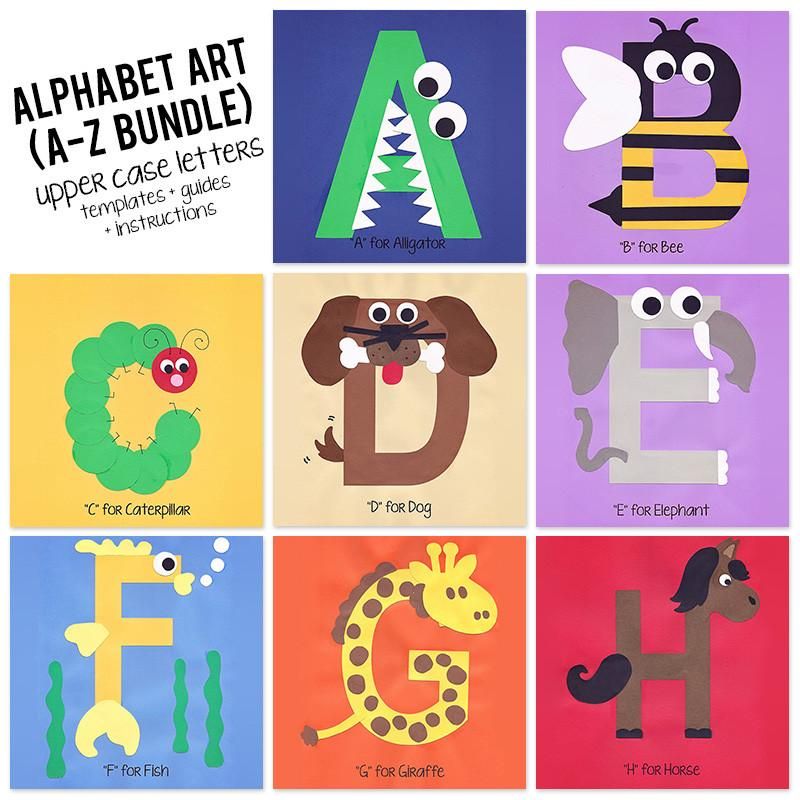
13. Make your own ABC book
Personalizing the ABCs helps kids process and retain their learning. One of our favorite alphabet activities starts by creating a book out of 26 pieces of paper and staples or hole punches and a ribbon. Have kids write an uppercase and lowercase letter on each page. Finally, have them draw or cut out pictures of things that start with each letter. Voila!
Learn more: Teach Mama
14. Create ABC popup books
Use the following tutorial video to learn how to make different kinds of pop up pages. Then, create a page per week for 26 weeks for each letter. At the end, use a glue stick to glue them all together to make an ABC popup book!
15. Stamp letters in playdough
Roll out playdough and push letter stamps right into the dough. This is both tactile and great for practicing ABCs.
Learn more: I can teach my child
16. Make tactile letter cards
There’s lots of research (and experience) to support the value of using all the senses to learn.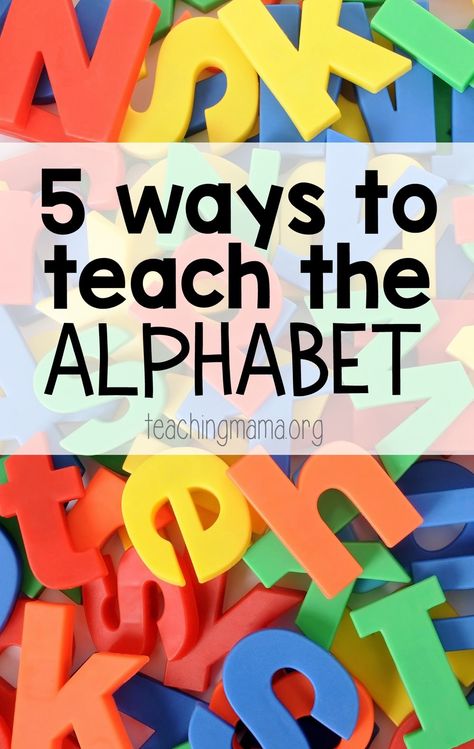 Making these tactile alphabet cards will be fun and have lasting benefits.
Making these tactile alphabet cards will be fun and have lasting benefits.
Learn more: All About Learning
17. Trace letters in spices
This one combines touch, smell, and sight. It gives you an opportunity to talk about what we uses spices for as well. Put the bottle in front of a child and have them write the spice name in the spice to make things a bit more challenging.
Source: Frog in a Pocket
18. Study a letter of the week
Many PreK and Kindergarten classes do a letter of the week, and for good reason. Teachers all share that instant recognition of letters and practice writing them is so important for learning to read. Doing alphabet activities for one letter each week reinforces knowledge and recollection.
For weekly activities: Preschool Mom
19. Do the yoga alphabet
Show kids this video and take the time to learn each yoga pose. Connecting the mind and the body is great for learning.
20. Sing songs about the alphabet
Everyone loves to sing the alphabet song, but did you know there are lots of other songs to sing that can help you remember the alphabet? Try out this Sesame Street favorite:
21. Draw pictures from letters
Using letters as a starting point, teach kids how to draw. If this is too difficult at first, just write a letter and then draw a picture around the letter.
Learn more: Felt Magnet
22. Highlight letters on a page
Print a page of text or grab your favorite magazine and a highlighter. Ask kids to highlight as many of one letter as they can find. This is also great for sight word recognition.
Here’s a freebie from The Inspired Apple to get you started.
23. Do-A-Dot letter tracing
These dot markers make tracing letters more fun and help kids with directionality and remembering how to write and recognize letters.
Free Dot tracing sheets: DTLK’s Educational Activities for Kids
24.
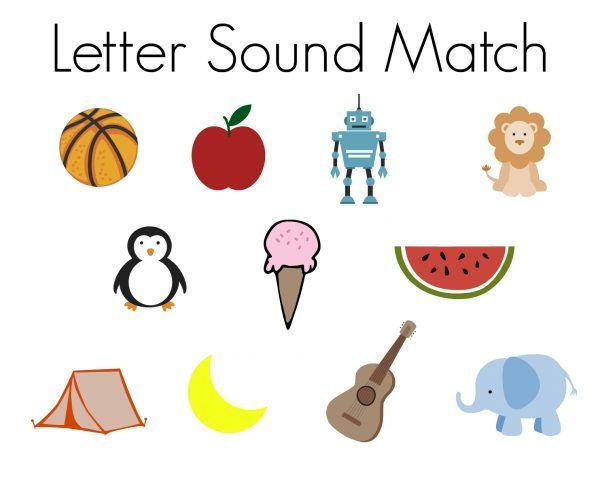 Play letter slap
Play letter slapMake 2 sets of index cards with all the letters on them (52 cards in all). Shuffle the cards together and deal them so each kid holds 26 cards. Together each player takes their top card and turns it upright. The player with the letter closest to A wins the hand and takes the card. If two of the same letter are played, the players slap the card. The one on the bottom of the slip wins the hand. The game ends when one player holds all the cards.
25. Match plastic Easter egg letters
Surely you have some plastic Easter eggs hanging around your attic. Use a Sharpie or letter stickers to put an uppercase letter on one half and a lowercase letter on the other. Then separate the two and throw them all in a basket. Kids pull them out and match them up. Tip: Add difficulty by not coordinating the colors.
Learn more: Crystal and Co.
26. Create loose part letters
What are loose parts? Loose parts are exactly what they sound like—a collection of loose materials or objects.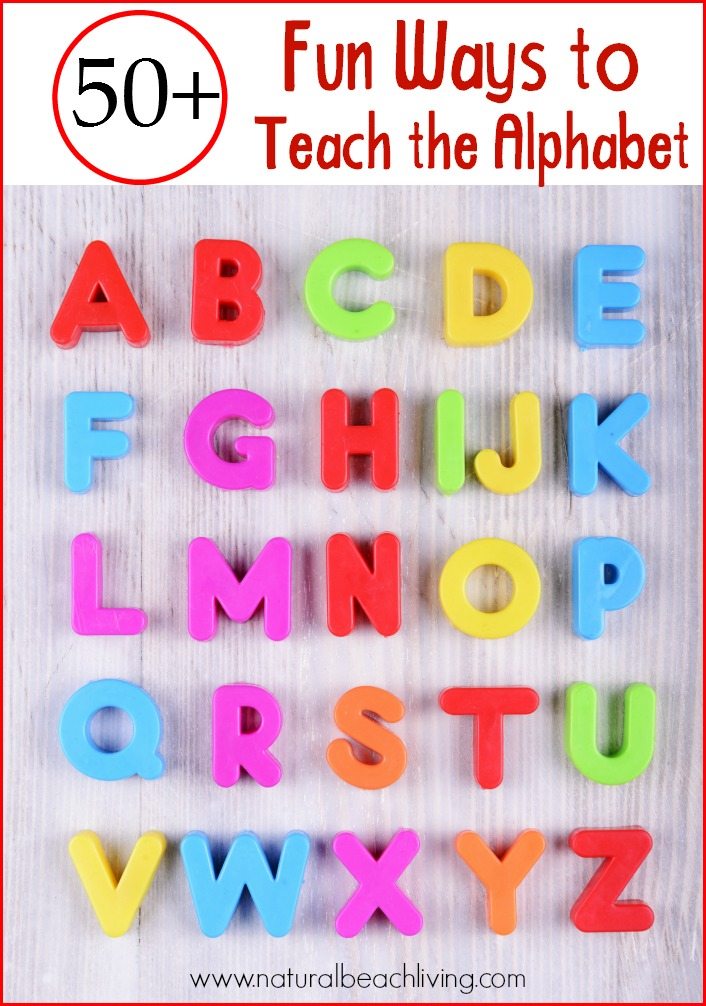 These can be small pebbles, bottle caps, random LEGO bricks, seeds, keys, anything. Draw big letters on a piece of paper and have kids line up loose parts to make the letter.
These can be small pebbles, bottle caps, random LEGO bricks, seeds, keys, anything. Draw big letters on a piece of paper and have kids line up loose parts to make the letter.
Recognizing letters is a fundamental part of learning how to read. Without it, children struggle to learn letter sounds and identify words. Beginning readers who know their alphabet have a much easier time learning to read. Making alphabet practice a part of every day in fun ways helps create a lifelong love for letters and words.
What games and activities do you like to use for practicing the alphabet?
Plus, our favorite activities using alphabet beads and the best alphabet books.
15 fun ways to teach the alphabet
How to teach your child all the letters of the alphabet?
Around the age of two, children already begin to exhibit a curiosity about letters and memorize the order in which they appear, so this is a good time to slowly start teaching them the alphabet.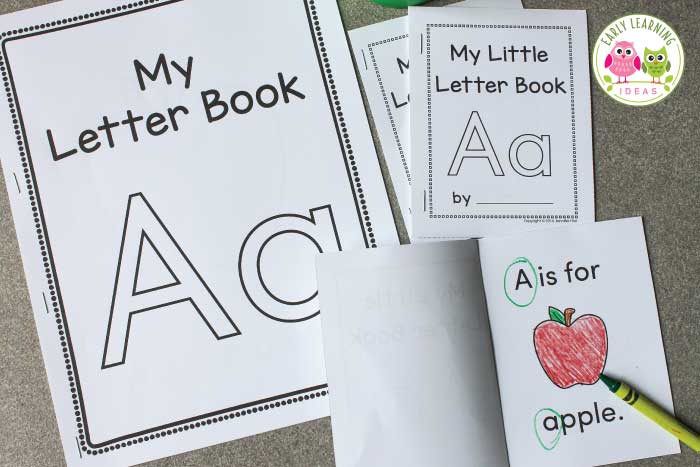
The first step the child needs to overcome is to familiarize themselves with the shape of each letter, and only then can they learn their order by heart. Later, when they start to learn to read, children will begin to distinguish between uppercase and lowercase letters. However, learning to recognize all letters is enough to begin with, and learning the order in which they appear will follow.
15 fun ways to teach the alphabet
It is important to teach your child in a direct and illustrative way which is age-appropriate and relatable to them. Some children master the alphabet immediately, while others need more practice and repetition. It doesn’t matter if your child belongs to the former or the latter group, you need to be patient and try to make the learning fun so that they don’t become stressed and develop an aversion toward letters and words.
The following games will help you with that:
1. Use alphabet blocks
Colorful blocks with letters are a great way for toddlers to simultaneously learn the alphabet and develop their motor skills, such as gripping, holding and moving.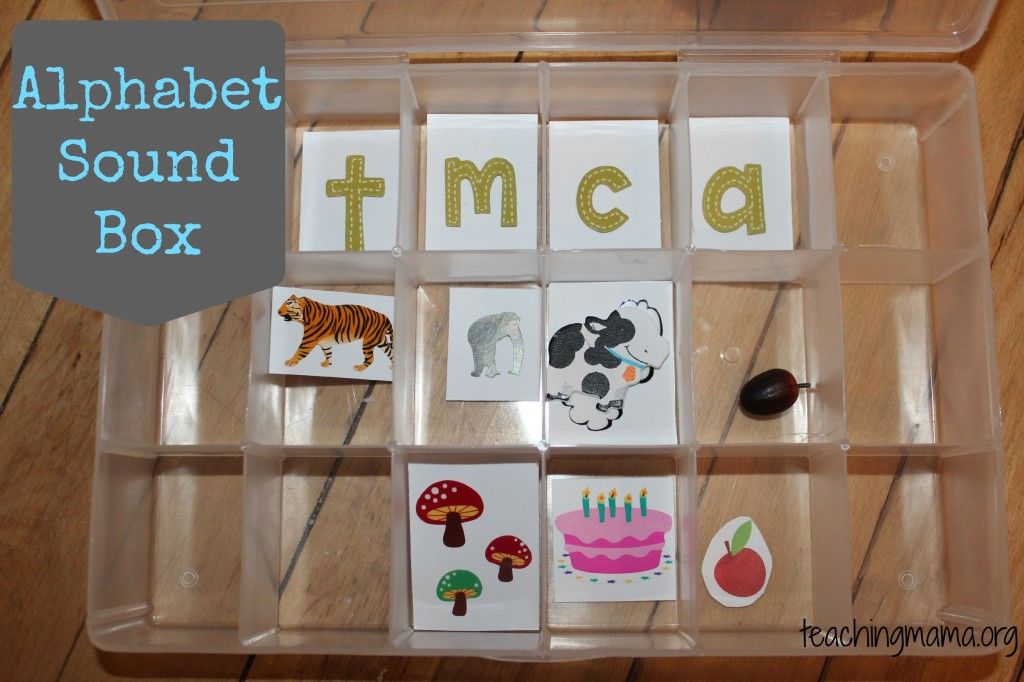 When your child is older, ask them to arrange the blocks in alphabetical order, to write their name using blocks, and later, some more complex words. Start with shorter and simpler words and help them to progress to longer and more complex ones.
When your child is older, ask them to arrange the blocks in alphabetical order, to write their name using blocks, and later, some more complex words. Start with shorter and simpler words and help them to progress to longer and more complex ones.
2. Play ABC songs
Children love songs, and it has been proven that songs help them adopt new knowledge. Whether they are learning their mother tongue, or a second language, one of the basic methods for learning the alphabet are ABC songs. Find an appropriate song and play it for your child, you will see that they will soon learn it by heart, and thus the alphabet as well.
These songs are useful because, in addition to music and lyrics, they also have a video in which the shape of each letter is shown so that the child will simultaneously learn how a letter looks, and how it is pronounced.
In addition to simple songs where each letter has a corresponding tone, another great method to help your child master the alphabet is to use songs that introduce the letters of the alphabet and words that begin with each of the letters. You can find a number of these songs online, play some of them to your child, and they will soon ask you to play the one they like the most again.
You can find a number of these songs online, play some of them to your child, and they will soon ask you to play the one they like the most again.
3. Read alphabet books
Children love stories and one of the most efficient ways to adopt knowledge in early childhood is through storytelling, so children will best learn the alphabet from books. Get one of many ABC books for learning letters and read them to your child over and over again. The child will have fun and after a few readings, they will begin to memorize letters of the alphabet.
4. Have your child learn the alphabet from coloring books
Coloring books are another great tool for learning the alphabet. You can find a large selection of specialized coloring books for learning the alphabet in bookstores. In addition to learning the alphabet, the child will also learn about shapes and colors, developing fine motor skills such as coloring with precision, and having fun in the process.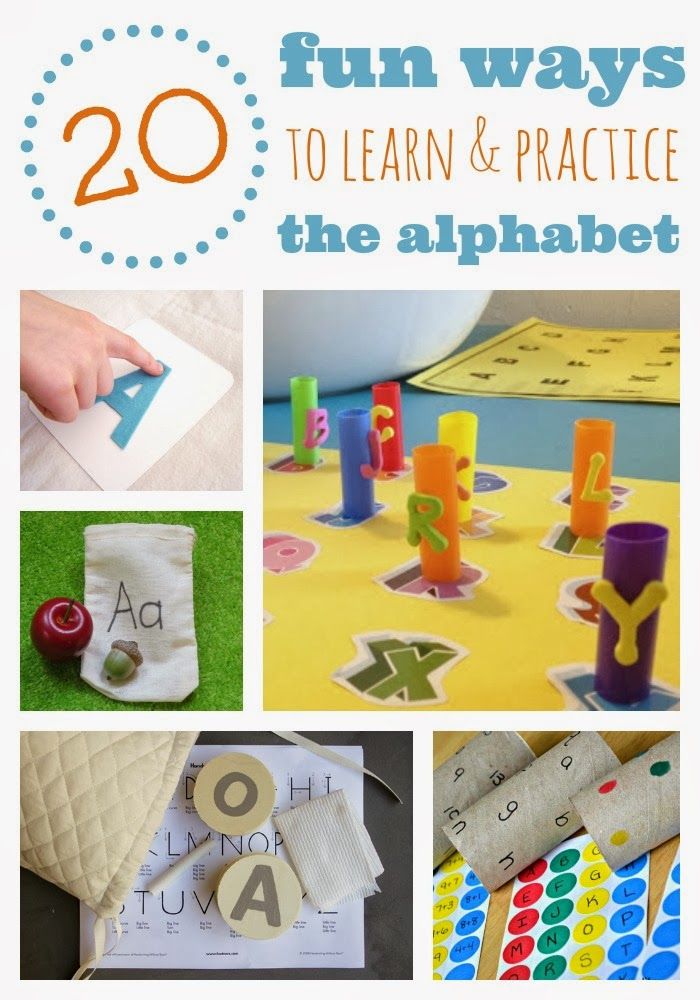
5. Picture alphabet or alphabet learning charts
Another great way to learn letters are illustrated charts containing every letter of the alphabet with a picture of an object or an animal the name of which begins with that letter. This way, your child will simultaneously learn letters and new words, i.e. master the picture alphabet. There are also alphabet paired cards where you place all the cards face down and then reveal one by one, matching the pairs. As the child improves their command of the alphabet, you can give them more complex cards containing two letters for example: AB, and the child should continue the letter sequence, adding the letter C in this case.
The ability to recognize letters on the flash cards is one of the indicators of how your child will later adopt more complex skills, such as reading and writing.
6. Use different devices
Video games or educational toys are also a great way to learn the alphabet.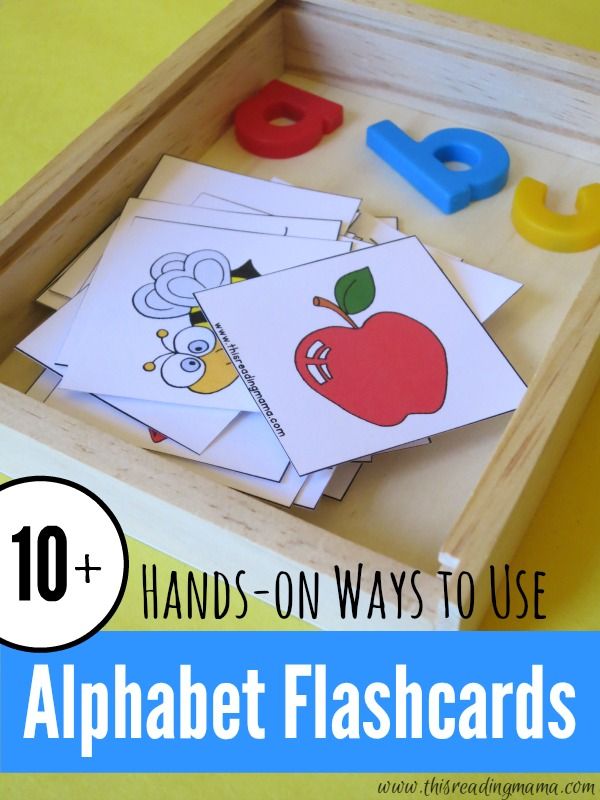 For example, there are toys where each button represents a different letter and an animal the name of which begins with that letter, so when the child presses the button, they will hear the sound the said animal makes. This way, the child will learn letters, words, types of animals, and sounds they make.
For example, there are toys where each button represents a different letter and an animal the name of which begins with that letter, so when the child presses the button, they will hear the sound the said animal makes. This way, the child will learn letters, words, types of animals, and sounds they make.
7. Visit interactive ABC websites
You can find several ABC websites online. By pressing a button, the child will see an illustrated list of words that begin with that letter. This is particularly amusing for children, because they become active participants in the learning process by choosing which letter to press, while at the same time learning new words with the help of illustrations.
8. Be creative
A great way for you to teach your child the alphabet while having fun together is to use stickers. You can choose stickers in 30 different colors to match each letter. Write a letter of each sticker and then post them in the appropriate order on the wall of the child’s room.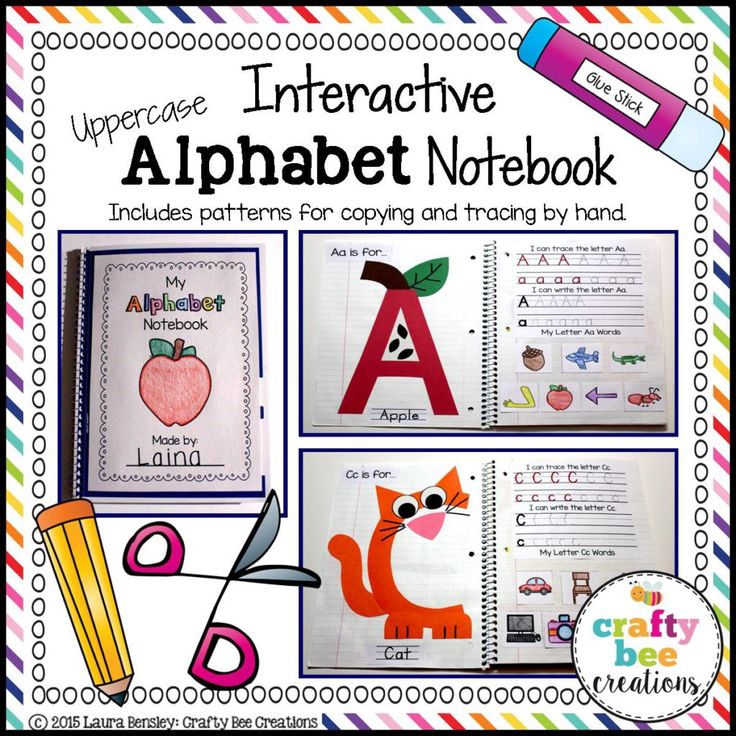 This way, the alphabet will be visible at all times, and the child will memorize it with ease.
This way, the alphabet will be visible at all times, and the child will memorize it with ease.
9. Alphabet puzzle
Another great method for learning the alphabet involves alphabet puzzles. Pieces of these puzzles are made of letters and illustrations of objects that begin with each letter, and the child’s task is to put the puzzle back together. This is a particularly effective learning technique because it combines tactile and visual skills, while also enabling your child to develop their vocabulary.
10. Point out different letters when you are outside with your child
Learning the alphabet doesn’t have to be a strictly indoor activity carried out with the use of different educational tools. Before they start school, children are extremely curious about the world and easily learn new things, so use this opportunity to teach them the alphabet. When you take your child to the shop, park or playroom, point out different letters you see along the way and ask them to identify them.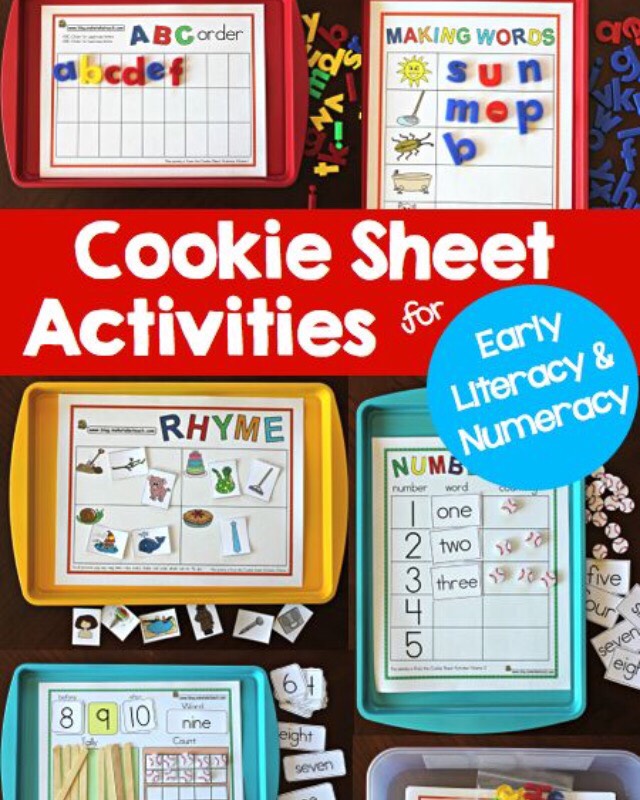
11. Surround the child with letters
A great way to teach your child the alphabet is to integrate letters into their daily activities. If your child likes to play with toy cars, make racing tracks for them in the shape of letters and ask the child to identify the letters while playing. In addition, you can arrange the child’s meals in the shape of different letters, and ask him/her to identify them before they start eating. This way, your child will unconsciously pick up the alphabet while doing other things they enjoy.
12. Have the child write letters in the snow or sand
When you go to the mountains, or the beach, your child can have fun while learning something useful at the same time. Encourage them to write one letter every day in the snow or sand. They can be giant letters or small ones, depending on what your child likes.
13. Bake letter-shaped cookies
Children like to get dirty, so it is no wonder they enjoy playing with dough.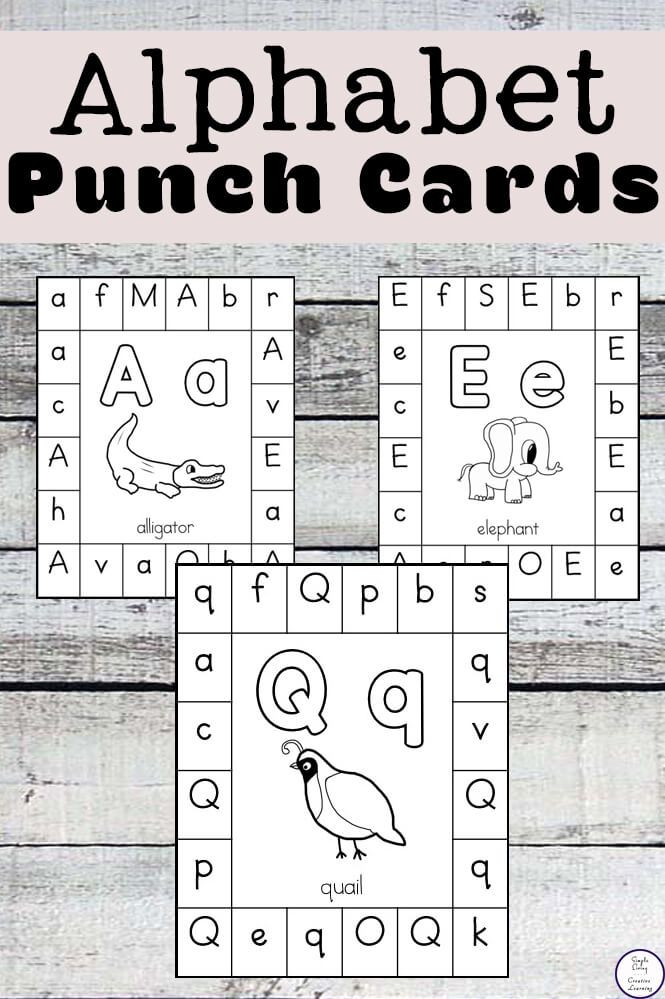 This is also their way of participating in adult activities, and helping their parents. Buy letter-shaped cookie molds and bake cookies with your child which you can also decorate together. Learning the alphabet this way will not only be fun, but tasty too. Bon appetit!
This is also their way of participating in adult activities, and helping their parents. Buy letter-shaped cookie molds and bake cookies with your child which you can also decorate together. Learning the alphabet this way will not only be fun, but tasty too. Bon appetit!
14. Introduce your child to uppercase and lowercase letters
As your child improves their knowledge of the alphabet, at some point, you should introduce them to uppercase and lowercase letters. Show them how each of the letters should look like, and then play a game. Buy, or make your own paired cards with uppercase and lowercase letters and ask the child to put the pairs together.
15. It is time for cursive alphabet
In addition to the print alphabet, the child should also learn the cursive alphabet, so you need to explain the difference between print and cursive letters, and compare them to each other. After that, you can play a game where the child needs to match a print letter with their cursive equivalent.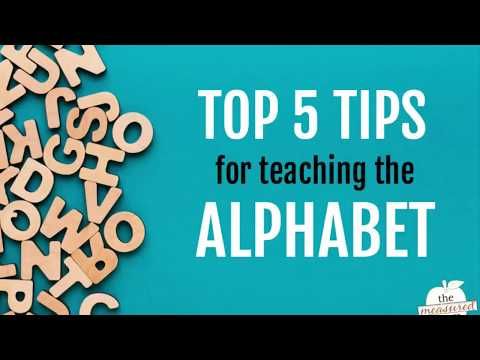
Be patient and have fun
Learning new things should, above all, be a fun and stress-free process. At an early age, children mostly learn from their parents, so use this period to watch them grow up and have fun together discovering new and interesting things that surround them. Be patient, supportive and motivate them, because this early stage of knowledge acquisition will have a great impact on their attitude toward learning when they are older.
So, have fun, laugh and enjoy the ABC journey together!
Creative ways to teach your child the alphabet - Child development
1. Make your own exclusive primer
Make your own primer with the children. Purchase a blank notepad (or scrapbook) from the stationery department, or make your own using heavy paper and a hole punch, sewing it together with bright, pretty ribbon. Help your child make a separate page for each letter. He can write a letter himself or cut out a letter he likes from an old magazine. The letter can be supplemented with colorful illustrations (with images whose names begin with it) by cutting out pictures from old coloring books, postcards or magazines.
The letter can be supplemented with colorful illustrations (with images whose names begin with it) by cutting out pictures from old coloring books, postcards or magazines.
2. Play the game "Find the letter" while traveling
This game is an easy and convenient way to teach your child the letters of the alphabet. Whenever you are driving somewhere, play the game "Find the Letter". Have your child look for the letter "A" on billboards, car license plates, or signs. Start with the letter "A", then move on to looking for the letter "B", etc. After you exhaust all the letters of the alphabet, start over.
3. Sing songs about the alphabet
Children love to sing, and what could be better than a song about the alphabet! Start your day off with a song or two to cheer up your little one, and don't forget to sing a song about the alphabet. You can find these songs on the Internet.
4. Play the game with flashcards
You can purchase alphabet flashcards or make your own using heavy paper or cardboard. Ask your child to match the capital letter "A" to its counterpart, the lowercase letter "a". At your discretion, you can start with both capital letters (offering to search for lowercase) and lowercase letters (offering to search for uppercase). Each time your child matches a matching letter, they should say it out loud.
Ask your child to match the capital letter "A" to its counterpart, the lowercase letter "a". At your discretion, you can start with both capital letters (offering to search for lowercase) and lowercase letters (offering to search for uppercase). Each time your child matches a matching letter, they should say it out loud.
5. Bake letter-shaped cookies
What child doesn't love cookies? Cut out cookies in the shape of letters from the dough or write letters (or better, invite your child to do it - according to your sample, for example) on cookies with icing. Let the child order you which letters he wants to eat. Have him spell out his name.
6. Make an alphabetic photo collage
Take your camera and take your child to the park, zoo or just walk the streets. Look for and photograph everything that begins with the letter "A", "B" or other letters that your photo hunt will be devoted to today, as well as words that begin with these letters, if any, fall into your field of vision.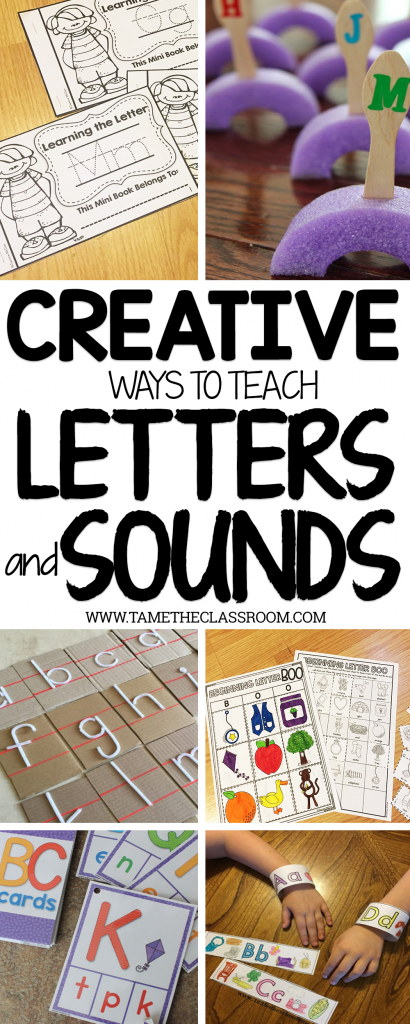 Once you have taken the photos, have your child cut them out and prepare them for a photo collage. Then let him write or paste the corresponding letter on thick paper and stick the prepared photographs around it. Children love to take pictures, so this fun activity will not leave them indifferent.
Once you have taken the photos, have your child cut them out and prepare them for a photo collage. Then let him write or paste the corresponding letter on thick paper and stick the prepared photographs around it. Children love to take pictures, so this fun activity will not leave them indifferent.
7. Another Alphabet Memory Game
Probably everyone has played this game. It is fun for both kids and adults. If your child is still young, you can simplify her rules. Start with the letter "A". So, say, for example, the following: "A begins with shark", "B begins with banana", "C begins with cherry" and follow the letters in the same way. If your child is older, you can make this game themed. For example, you can alphabetize only fruits or only animals. Children will learn to memorize words of certain categories, as well as repeat the alphabet.
8. Play Alphabet Lottery
Make your own card lotto from construction paper. Write the letters of the alphabet on them.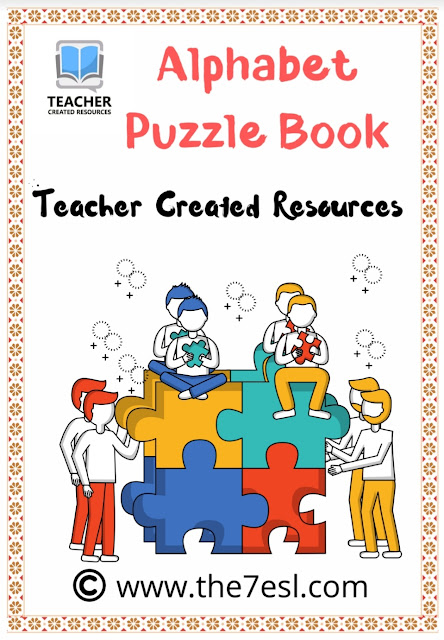 Name the letters and have your child mark them on a card or put kegs on the letters. When the child wins, he can call "Bingo". To make this game even more fun, you can reward the winner with small prizes.
Name the letters and have your child mark them on a card or put kegs on the letters. When the child wins, he can call "Bingo". To make this game even more fun, you can reward the winner with small prizes.
9. Drawing the alphabet with your fingers
Use thick paper or whatman paper and use your child's fingers to draw different letters on it. Have your child draw uppercase and lowercase letters. Let him decorate them around the edge with colored dots or small drawings - as he wants.
10. Play alphabet hide and seek
Fill the bag with items that start with different letters. For example, you can put a typewriter, a book, a pen, etc. in it. Show the child all the items. Then put them in a bag. Ask him to find a certain object without looking, but only by touching it. For example, can he find an item that starts with the letter "K"? What sound corresponds to the letter "K"? Then watch to see if he finds the book in the bag by touch. This game is good not only for teaching letters and sounds, but also for developing children's tactile skills.
This game is good not only for teaching letters and sounds, but also for developing children's tactile skills.
Creative ways to teach your child the alphabet
1. Make your own exclusive primer
Make your own primer with the children. Purchase a blank notepad (or scrapbook) from the stationery department, or make your own using heavy paper and a hole punch, sewing it together with bright, pretty ribbon.
Help your child make a page for each letter. He can write a letter himself or cut out a letter he likes from an old magazine. The letter can be supplemented with colorful illustrations (with images whose names begin with it) by cutting out pictures from old coloring books, postcards or magazines.
2. Play the game "Find the letter" while traveling
This game is an easy and convenient way to teach your child the letters of the alphabet. Whenever you are driving somewhere, play the game "Find the Letter". Have your child look for the letter "A" on billboards, car license plates, or signs. Start with the letter "A", then move on to looking for the letter "B", etc. After you exhaust all the letters of the alphabet, start over.
Start with the letter "A", then move on to looking for the letter "B", etc. After you exhaust all the letters of the alphabet, start over.
3. Sing songs about the alphabet
Children love to sing, and what could be better than a song about the alphabet! Start your day off with a song or two to cheer up your little one, and don't forget to sing a song about the alphabet. You can find these songs on the Internet.
4. Play a game with flashcards
You can purchase educational alphabet flashcards or make your own using heavy paper or cardboard. Ask your child to match the capital letter "A" to its counterpart, the lowercase letter "a". At your discretion, you can start with both capital letters (offering to search for lowercase) and lowercase letters (offering to search for uppercase). Each time your child matches a matching letter, they should say it out loud.
5. Bake cookies in the shape of letters
What child doesn't like cookies? Cut out cookies in the shape of letters from the dough or write letters (or better, invite your child to do it - according to your sample, for example) on cookies with icing.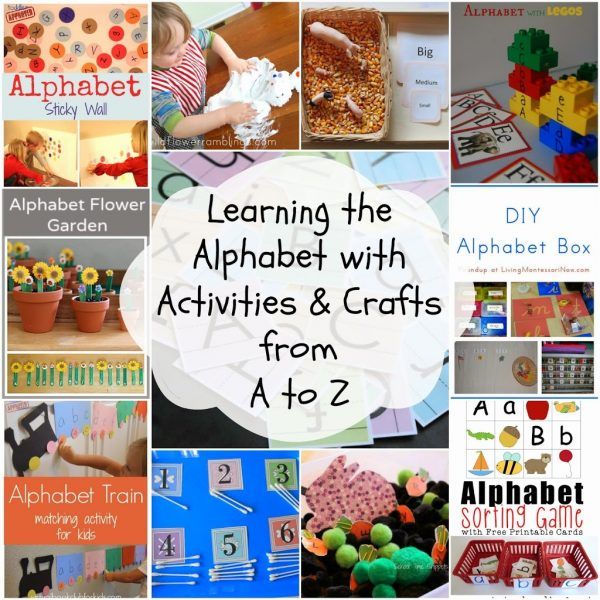 Let the child order you which letters he wants to eat. Have him spell out his name.
Let the child order you which letters he wants to eat. Have him spell out his name.
6. Make an alphabetic photo collage
Take your camera and take your child to the park, zoo or just walk the streets. Look for and photograph everything that begins with the letter "A", "B" or other letters that your photo hunt will be devoted to today, as well as words that begin with these letters, if any, fall into your field of vision. Once you have taken the photos, have your child cut them out and prepare them for a photo collage. Then let him write or paste the corresponding letter on thick paper and stick the prepared photographs around it. Children love to take pictures, so this fun activity will not leave them indifferent.
7. Another Alphabet Memory Game
Probably everyone has played this game. It is fun for both kids and adults. If your child is still young, you can simplify her rules. Start with the letter "A". So, say, for example, the following: "A begins with shark", "B begins with banana", "C begins with cherry" and follow the letters in the same way.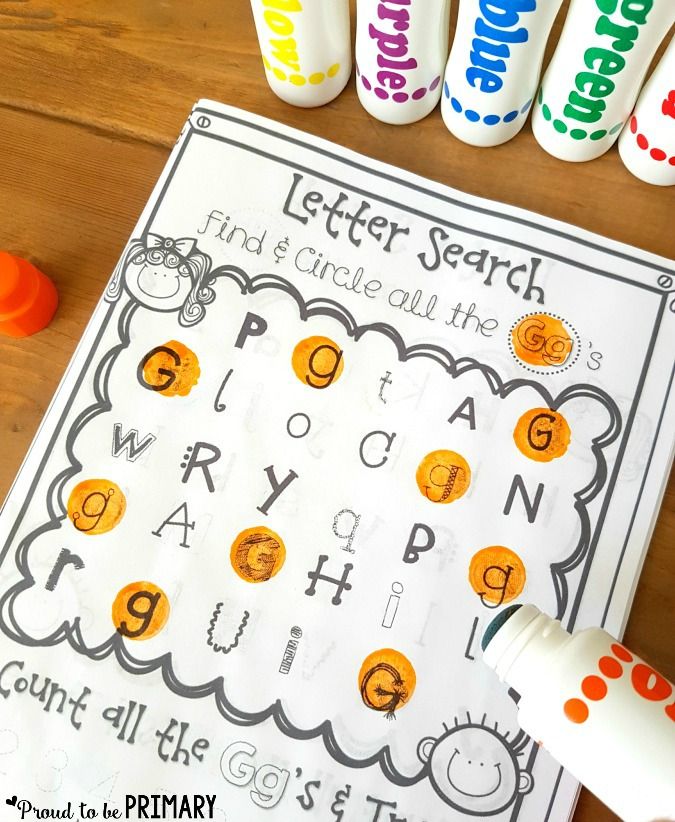 If your child is older, you can make this game themed. For example, you can alphabetize only fruits or only animals. Children will learn to memorize words of certain categories, as well as repeat the alphabet.
If your child is older, you can make this game themed. For example, you can alphabetize only fruits or only animals. Children will learn to memorize words of certain categories, as well as repeat the alphabet.
8. Play Alphabet Loto
Make your own loto cards out of construction paper. Write the letters of the alphabet on them. Name the letters and have your child mark them on a card or put kegs on the letters. When the child wins, he can call "Bingo". To make this game even more fun, you can reward the winner with small prizes.
9. Drawing the alphabet with your fingers
Use thick paper or whatman paper and use your child's fingers to draw different letters on it. Have your child draw uppercase and lowercase letters. Let him decorate them around the edge with colored dots or small drawings - as he wants.
10. Play alphabet hide and seek
Fill the bag with items that start with different letters. For example, you can put a typewriter, a book, a pen, etc.